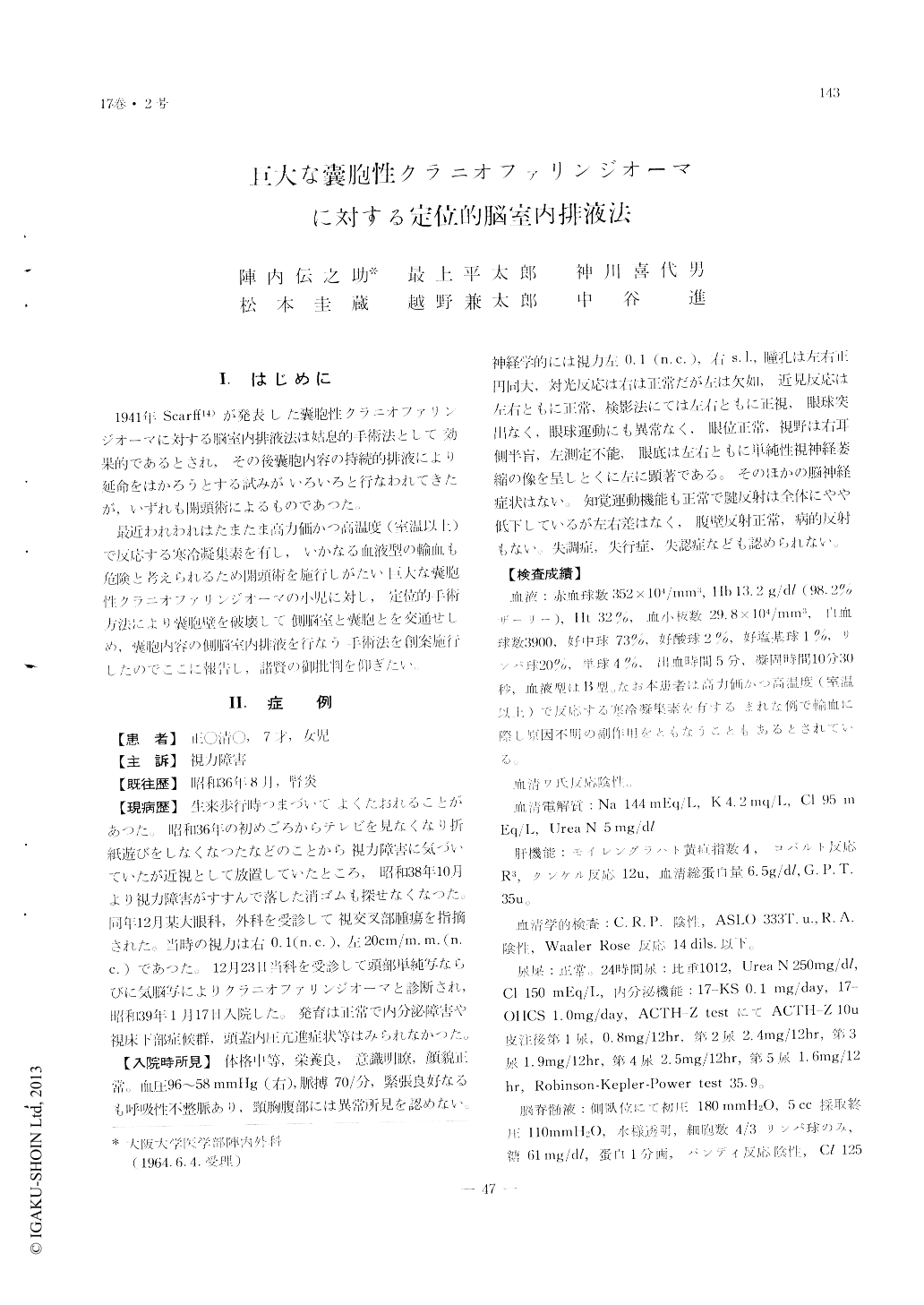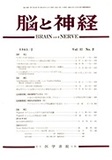Japanese
English
- 有料閲覧
- Abstract 文献概要
- 1ページ目 Look Inside
I.はじめに
1941年Scarff14)が発表した嚢胞性クラニオファリンジオーマに対する脳室内排液法は姑息的手術法として効果的であるとされ,その後嚢胞内容の持続的排液により延命をはかろうとする試みがいろいろと行なわれてきたが,いずれも開頭術によるものであつた。
最近われわれはたまたま高力価かつ高温度(室温以上)で反応する寒冷凝集素を有し,いかなる血液型の輸血も危険と汚えられるため開頭術を施行しがたい巨大な嚢胞性クラニオファリンジオーマの小児に対し,定位的手術方法により嚢胞壁を破壊して側脳室と嚢胞とを交通せしめ,嚢胞内容の側脳室内排液を行なう手術法を創案施行したのでここに報告し,諸賢の御批判を仰ぎたい。
Craniopharyngiomas vary solid, well circumscribed nodules to large multi-or mono-cular cyst. A comp-lete removal of the large tumor is sometimes criti-cal to life, but such tumors are usually cystic. Puncture of the cyst through a burr hole would seem a favorable procedure for the patient whose neurosurgical condition is too hazard to perform regular craniotomy against tumor. Permanent intraventricular drainage of the large cyst advocated by Scarff has been proved successful.
A seven year old girl admitted to our hospital because of her visual disturbance, had a huge cystic craniopharyngioma with an extent up to the bottom of right lateral ventricle. She had a difficult problem of blood transfusion, because her cold agglutinin was activated at room temperature. Prior to the surgery PEG was performed and the anterior horn of the lateral ventricle was visualized. Through a burr hole in the right frontal region an exploration cannula was inserted toward a point 2cm above the sella turcica stereotaxically. Elastic resistance was felt at a depth of 7cm under the cortical surface. This indicated the wall of the cyst. Electrocoagulation was then performed to penetrate the wall of the cyst and to make a hole as a permanent canal between the anterior horn of the right lateral ventricle and the cyst. Through the cannula nearly twenty cubic centimetre of greenish brown fluid was excreted from the cyst and was replaced with approximately same amount of air. Roentgenogram revealed the size and anatomical relationship of the lesion clearly. Improvement of symptoms was obtained by this ye-ntriculocystostomy and the patient had a quite une-ventful post-operative course. She was discharged from our hosital three weeks after surgery. One year's post-operative follow-up revealed further inprovement of visual disturbance.
Cystic fluid of craniopharyngioma is expected to drain into the lateral ventricle through the newly formed communicating canal in this surgery. If the canal obstructed, reoperation would be easily able to perform through the previous trephine opening. It can be expected fairly excellent operative results for the patient who has a large cystic craniophary-ngioma with poor neurosurgical condition.

Copyright © 1965, Igaku-Shoin Ltd. All rights reserved.


